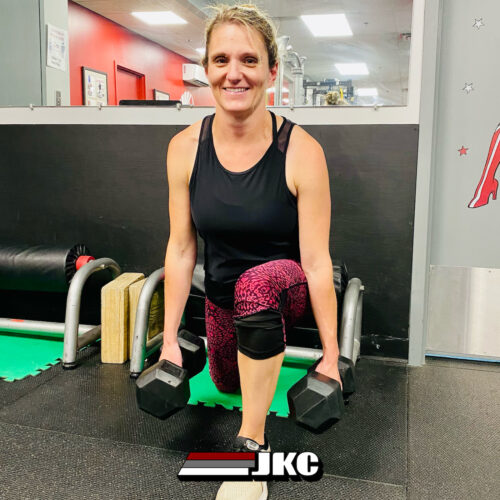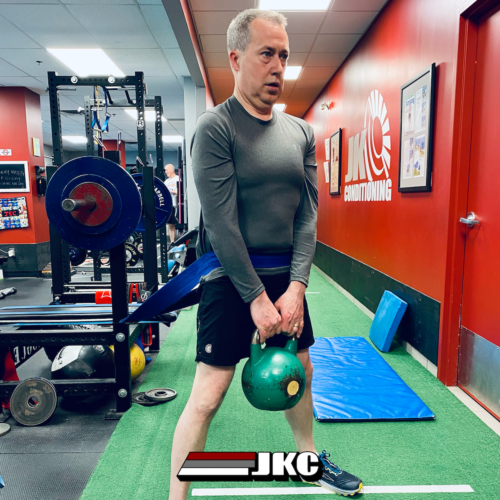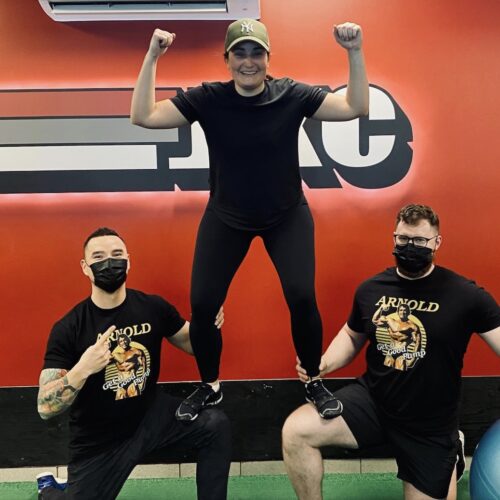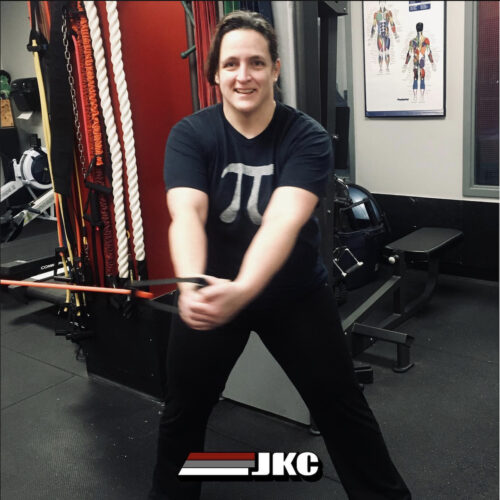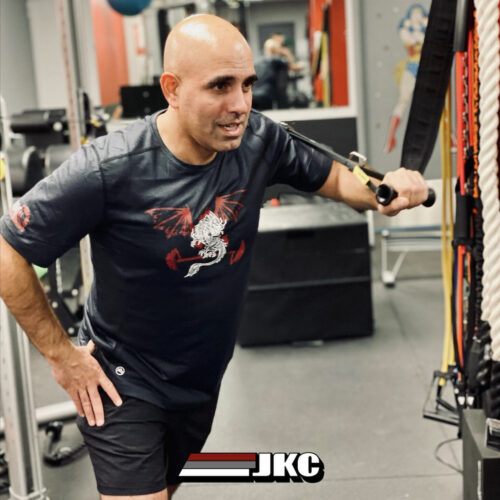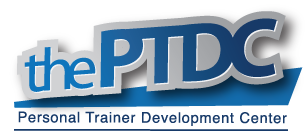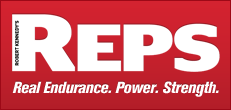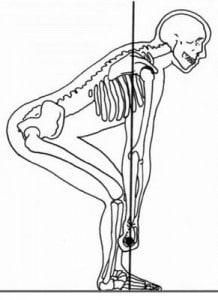
A few weeks back, I posted Posterior Chain Part I. Here is Part Two – the exercises.
Remember, posterior chain exercises focus on strengthening the muscles we can’t see, typically the hamstrings, gluteals and low back extensors. Thanks to computers modern life, our posterior chain, particularly our glutes become weak and in some cases dormant. Dormant glutes otherwise known as ‘gluteal amnesia’ is a situation where the hamstrings take over the action of hip extension. The gluteus maximus should be the primary hip extension, getting help from the hamstrings and some of the adductors, but muscle imbalances can get created, leaving you at a higher risk for injury.
This situation is also called ‘synergistic dominance’ in which a synergist (a muscle that performs a similar movement about a joint) in this case the hamstrings, dominates the gluteals when performing hip extension.
The goal is to minimize muscle imbalances in the body (muscle strength or muscle flexibility). Regarding runners, your goal is also to maximize your ability to develop force fast, create, store and utilize elastic energy and obviously to race faster!
Here are examples of posterior chain exercises I give my clients/athletes (not exhaustive, just a few examples).
Explosive Posterior Chain Exercises
Kettlebell Swings
 |
Kettlebell swings can be performed with one kettlebell or two. The idea is to create a pendulum around the hips. Absorb the weight high up near your groin as if you’re doing a hike pass in football. This eccentric loading of the hamstrings and hips prepares the body for the following swing.
*As a note on my technique here – my neck is a little too hyper extended. Try to tuck your chin more than what I have here in this picture. This is known as “packing the neck” – thanks to Charlie Weingroff. |
 |
Keep your shoulders packed and swing the bell up. Thrust your hips forward and squeeze your glutes hard at the top. Pull your knee-caps up by tightening your quads. The bell should finish at chest level. Remember, this is a hip exercise – do not use your arms or shoulders to “raise” the bell. Slightly exhale at the top of the swing. Sets of 10 to 20 or even more can be performed in a given workout. |
Olympic Lifts – Clean
 |
More along the tougher end of the exercise spectrum are olympic lifts. Remember, they are a sport in their own realm and olympic lifters spend their whole career perfecting their technique. If you don’t have enough time to learn olympic lifts, that’s okay. If you have a good strength and conditioning coach handy and enough time, I would encourage you learn them. They add variety to your training, improve explosive power and they improve athleticism. This is a picture of a squat clean from the floor, particularly the triple extension phase. For those that don’t know, the power house of this lift is the posterior chain. The triple extension that occurs at the ankles (plantar flexors), knees (quadriceps) and hips (glutes, hamstring and low back) drives the bar upward. |
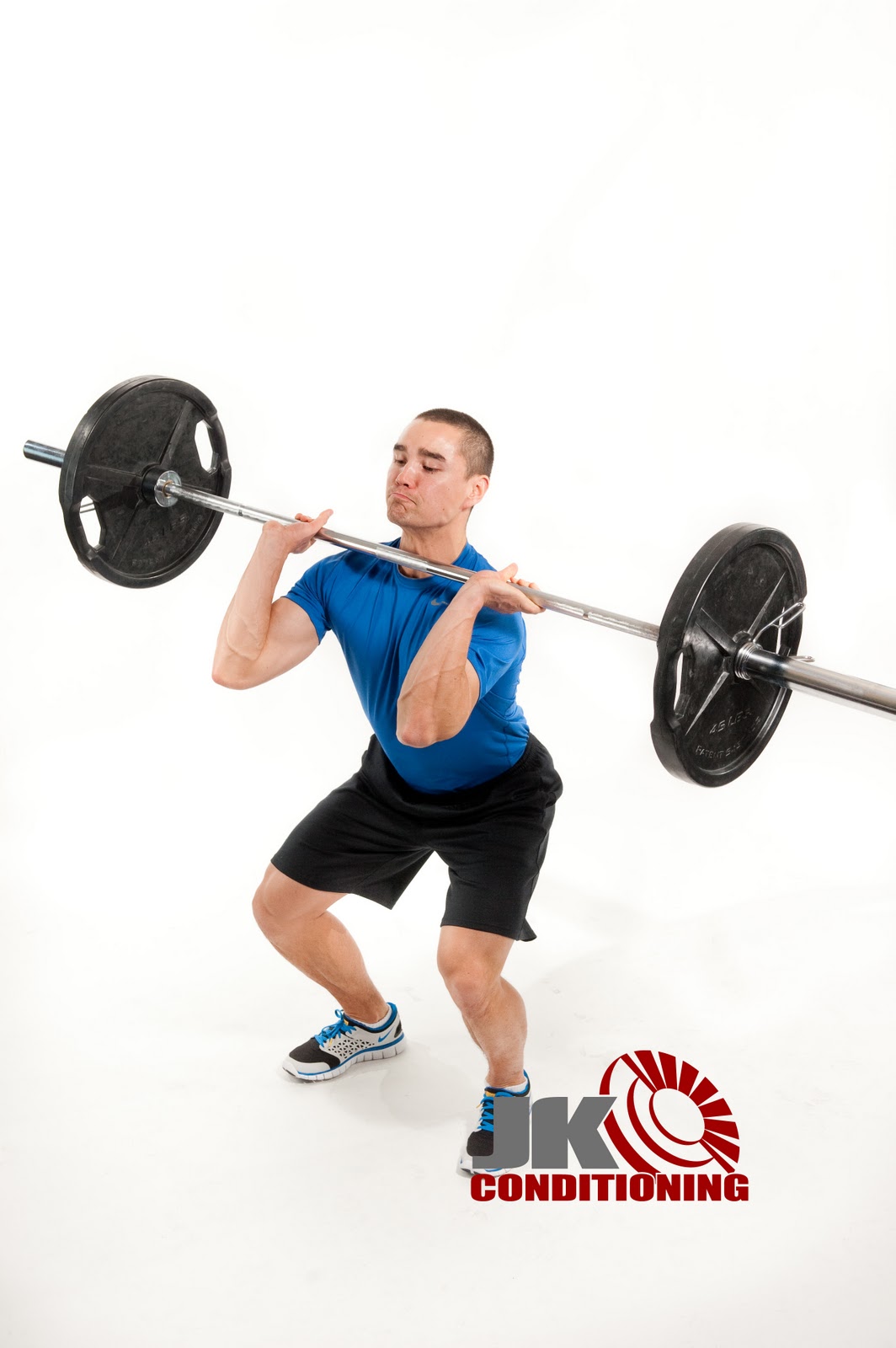 |
The toughest part about learning the clean is the timing of the 1st and 2nd pulls and teaching the wrists to extend during the catch phase. The bar should be caught on the front of the shoulders (on the muscles, not the clavicle) where the bar would sit for a front squat. The wrists should have optimal mobility to extend and finish beside the shoulders. The wrists and arms actually support the bar very little in the catch position. If performed incorrectly, the wrists can take a beating. Cleans are typically performed in sets of 5 or less for multiple sets at the beginning of a workout. More repetitions can be performed in a set such as in Crossfit; however, I do not support the idea of Crossfit and how they use high-rep Olympic lift-sets in their programs. That’s actually an entirely different blog post in itself. I’ll save that for another time… |
Olympic Lifts – Snatch
 |
The snatch involves a much wider grip on the bar. The concept is the same in that the triple extension of the ankles, knees and hips drive the bar upward. The posterior chain again is the power house behind the lift. The bar should be held with the arms wide enough apart so that if you bent over from your hips, the bar would sit in your hip crease. The “hook grip” will have to be utilized when the weight starts to get heavy. The dumbbell version is a much easier version to learn compared to its barbell cousin. Sets of 5 of less can be performed at the beginning of a workout for multiple sets. |
Other Posterior Chain Exercises
Conventional Dead Lift
 |
This exercise is the king of posterior chain exercises… if performed correctly. MANY people do this exercise wrong in the gym. The idea is to keep a neutral spine during the entire lift. People that compete in power lifting will use a slightly rounded back when they are lifting around their maximum. For the clients and athletes I train, I do not encourage a rounded back during this exercise. |
 |
The timing of the lift is also important. You must create maximal tension with a belly breath before lifting the bar. A mixed grip is acceptable when the weight gets really heavy. I would encourage lifting with a double over hand grip until you absolutely can’t. Drive the chest up with the back roughly at a 45 degree angle. Extend the hips hard once the bar passes the knees. Squeeze the glutes hard into that bar when you’re standing tall at the top of the lift. Keep the shoulders packed and squeeze the hell out of the bar. I like working up to a maximal set of 5 reps or less. A strong double always feels like such an accomplishment. |
Stiff Leg Deadlift AKA Romanian Dead Lift
 |
This version of the dead lift does not utilize the quadriceps. This is a pure hip hinge. With a neutral spine, drive your heels hard into the floor with soft knees to lift the bar. Keep your chest out and shoulders packed to maintain a nice long spine. Drive your hips into the bar and finish standing tall with a strong glute squeeze. Again for strength, sets of 5 or less will work best. |
Single Leg Stiff Leg Dead Lift
 |
| Dumbbells can be held in both hands or just one. A bar bell can also be held. |
This exercise also challenges single leg hip stability, which is important for runners. If a weight is only held in one hand, anti-rotation core stability is also challenged.
Hamstring Curls on Ball
 |
A firm ball helps when performing this exercise. |
 |
Roll the ball in and stand on the ball to drive your hips up high. Finish with a straight line from your shoulders to your knees. Squeeze your glutes hard. I like performing sets of 8-12. |
Hip Thrust
 |
This exercise has been made popular by Bret Contreras. This is an excellent exercise to train the glutes to perform full hip extension. With the shoulders placed higher than the feet (compare to the hamstring curl on the ball where the feet are placed higher than the shoulders) the glutes and full range hip extension are challenged more. |
 |
Place a weight across your hips. Pivot your shoulders on a bench and drive your hips up to the sky. Squeeze your glutes hard at the top of the lift. I like challenging the body with sets of 8-12 with this exercise. |
Glute-Ham Raise (Mike Robertson has a great video on this here)
This is a fantastic exercise to develop strong hamstrings, glutes and calves. This exercise is RARELY performed in any gym setting because they either do not have the equipment or people are ignorant to the technique. Mike is a smart man so that is why I posted his video to share with you. This exercise trains the knee flexion action of the hamstrings; remember that they cross the hip and knee joints meaning that the hamstrings help extend the hip but also flex the knee.
Good Morning
 |
This exercise has a bad rap for being bad for your back. This is far from correct. Squats can be bad for your back. So can dead lifts and so is sitting at your computer. Technique is key in any exercise, especially this one. With a bar placement similar to a back squat and with soft knees, drive your butt back, back, back, back and back… |
 |
…bow through your hips and keep your chest out. Pull the bar down into you and keep your shoulders packed. You should feel good tension in your hamstrings. You will feel tightness in your back and your low back. This is the isometric contraction required to maintain a neutral spine. Sets of 8-12 will do. |
Weighted Hip Lift
 |
I got this exercise from a Parisi Speed School DVD years ago, hence the old picture. Hold a plate on one knee and with the opposite leg, drive it into a bench to lift your hips up. |
 |
Steady the plate and lift to a straight body position. I like doing 8-15 repetitions per leg. |
I hope you have a better understanding of the posterior chain now. Add some of these exercises into your program and leave me some comments below on how you make out.
Thanks for reading,
-Jon

